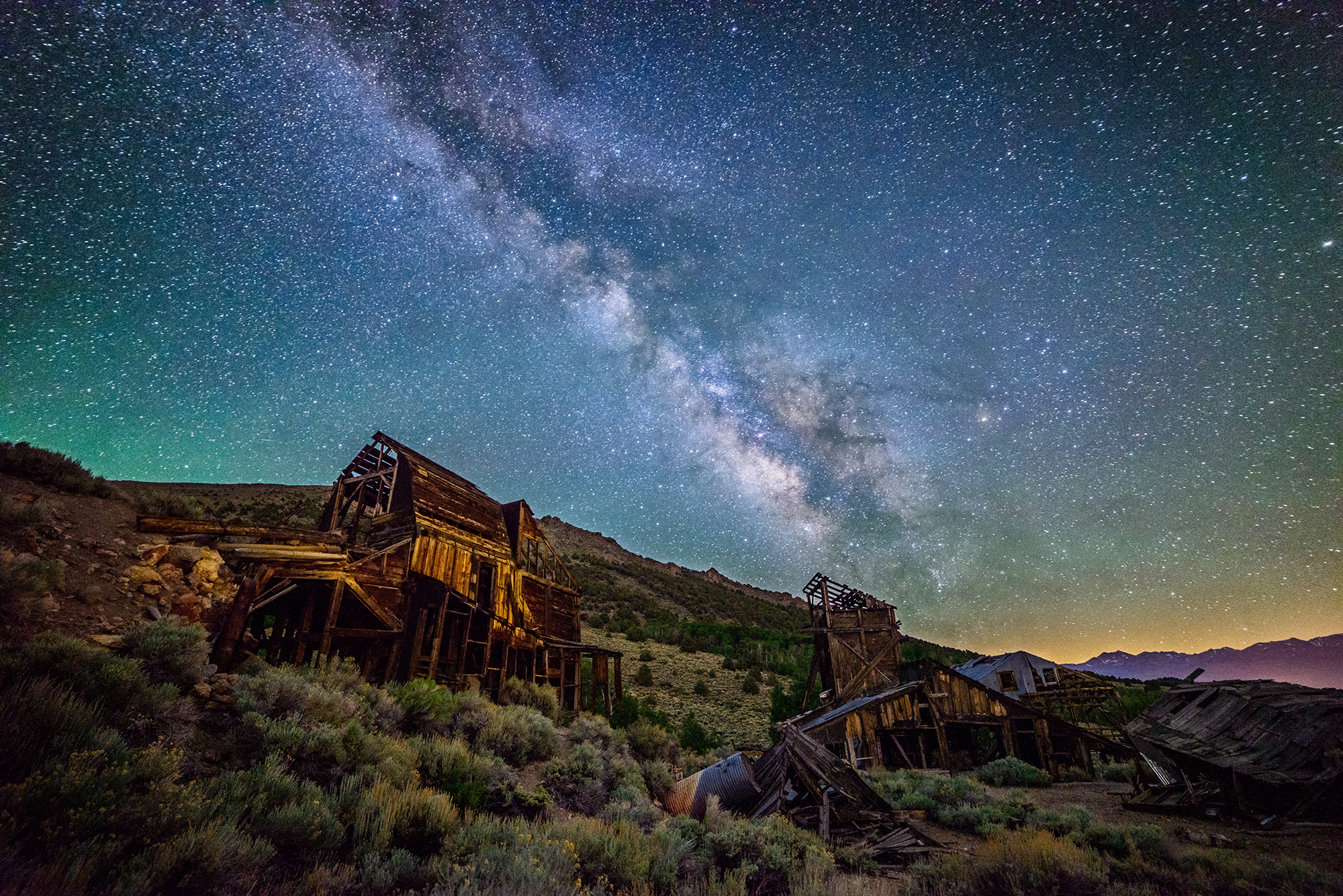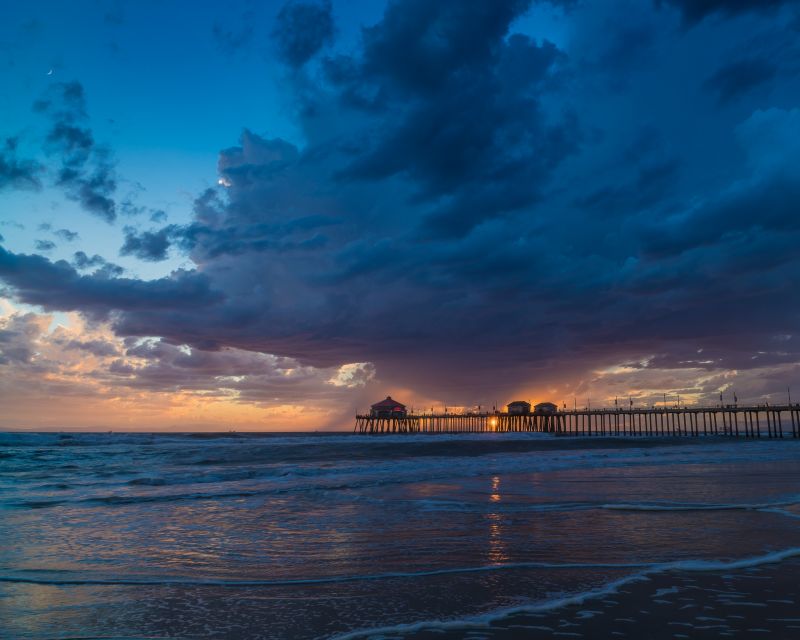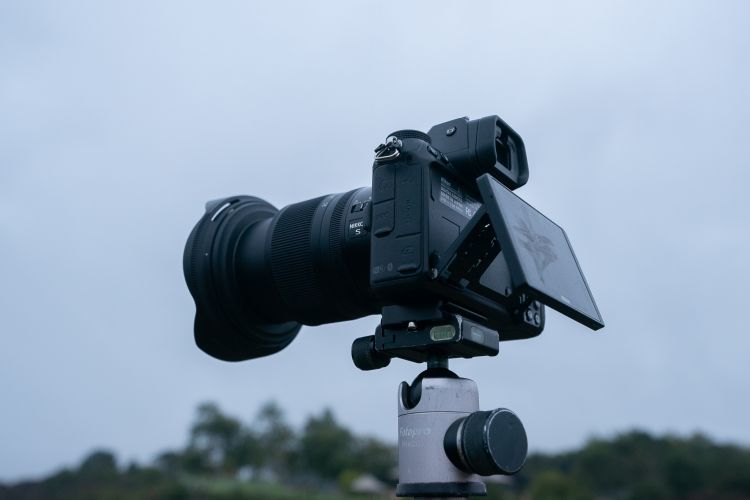
Whenever someone asks me if one camera, lens, or an entire system is better than another, I always reply the same way: “well, what kind of photography do YOU do? What is YOUR style, artistically?”
Honestly, what you photograph, and how you approach it creatively, makes a world of difference when it comes to which cameras and lenses are “perfect” for you. And, truth be told, literally every camera system out there right now has certain major advantages that can make it a top choice, if you mostly shoot a certain type of photos/video.
Today, my case-in-point is going to be the following statement: For serious landscape photography, Nikon still reigns supreme. In fact, as a traditional landscape photographer and also an astro-landscape and timelapse photographer, I absolutely still prefer Nikon’s bodies, lenses, and many specific, unique features, hands-down.

Why? It’s not just the image quality of one or two of their latest bodies, it’s the image quality (from megapixels to dynamic range to lens sharpness) of their whole entire lineup for the last 10+ years, with both DSLR and mirrorless systems. It’s not just the features or weather sealing of one or two of their latest bodies, either. It’s the overall reputation for making nearly indestructible cameras that can take a beating from the elements, (AND the idiot behind the viewfinder!) …for decades, too.
Without any further ado, here’s the breakdown of five of the biggest reasons why, if you’re serious about landscape photography in particular, or a few of the other things that a landscape photographer might get into such as nightscapes or timelapse, …you absolutely should consider Nikon to be one of the best choices around.
1. The Base ISO 64

Okay, first let’s admit the truth: for many types of photographers, both serious and casual, ISO 100 is perfectly fine as a base ISO. Nobody who barely gets their exposure right half the time even deserves to quibble over 2/3 EV worth of improved image quality, either! So, if you’re not nailing your exposures as a landscape photographer, then you need to go practice checking your histogram, and comparing how it looks on your camera to how it looks in Lightroom or Capture One!
However, here’s the second honest truth: landscape photographers, in particular, can indeed utilize every last bit of image quality and exposure range/latitude they can get, if they do expose perfectly. Or, even if they miss the perfect exposure that balances highlight preservation with shadow recovery, or if they bracket very often for safety, it can still be extremely useful to have the most dynamic range and the cleanest shadows possible.

To this end, Nikon reigns supreme with their D810, D850, and Z7 which offer not only incredibly high resolution, but also incredible image quality overall at ISO 64.
It’s true that Sony’s A7Riii and A7Riv come very close, when shot at ISO 100, and it’s also true that if you’re “shooting sloppy” on any camera you will see far better results by simply getting your exposures right, than by actually jumping ship from one system to another.
Having said that, the bottom line is that Nikon has demonstrated how serious they are about serving landscape photographers and any other type of photographer who wants to capture as many photons as possible.
And, who knows, maybe Nikon’s next camera will have a new base ISO of 50, or 32!!! You never know. (We don’t have any info; this isn’t a rumor, just a wish!)
[Rewind: Nikon D850 Review | The Last Titan?]
2. The Most Versatile NEF files

Okay, so you’ve got a ton of megapixels and great dynamic range. However, if you’re a really prolific outdoor photographer in general, you might cringe to see just how many megabytes are being consumed for a single raw file. Of course this isn’t a problem if you’re like those Youtubers who spend three days just to click a single photo; you’ll be fine with a couple 32GB memory cards no matter what!
But, if you ever get bit by the timelapse bug, you’ll quickly find yourself coming home from just a day or two of adventures with many thousands of shots. Whether you’re a full-time pro or just a serious hobbyist who makes time to shoot raw timelapse frames every single week, you’ll fill your memory cards and hard drives filling up very quick shooting 36-40+ megapixel raw images. Throw in a few 4K video clips here and there, and you’ll look for any way to reduce storage consumption!
This is where Nikon’s NEF file options completely destroy the competition. No, I’m not talking about the silly “mRAW” options, either, those are a waste of resolution and many times a timelapse can capture individual frames that you want to print huge, even if you’re not going to worry about turning the timelapse itself into an 8K video.

What I’m talking about is their bitrate and compression options. Nikon’s are the best in the business, period. You can switch almost any Nikon from 14-bit to 12-bit NEF, which saves a huge huge amount of space and yet barely shows any difference in overall image quality. (We’ve tested this, repeatedly!)
Also, unlike the competition which either have just one or two compression options, Nikon allows you to choose between all three: uncompressed, lossless compressed, and (lossy) compressed NEF. Yet again, this comes at no perceptible quality loss, especially when your raw images are only going to be a single frame in a 4K timelapse.
It gets better: unlike any competitor, you can combine any of these raw options to suit your exact need. So, for example, if you’re shooting single frames of epic landscapes, you can shoot 14-bit lossless NEF. Then, if you decide to rattle off 1,000-2,000 raw timelapse frames in a few hours, you can shoot 12-bit compressed NEF, and more than double your memory card capacity.
(NOTE: when shooting lossy compressed NEFs, the remaining frames estimator is very conservative; you can expect to fit an additional 20-30% more onto your memory cards!)
Last but not least, for those who are really quirky and picky about getting their shots exactly the way they want in the field, Nikon offers the most diverse range of in-camera cropping. It may sound crazy to crop your photos to 4:5 or 16:9 aspect ratios while you’re in the field, but it can be a neat creative tool that actually helps you compose your shots more carefully. It’s not for everyone, but I find it to be useful at times.
[Rewind: Nikon Z7 Review | Full-Frame Mirrorless Landscape Photography Camera]
3. The Best Weather Sealing Around

Just ask any landscape photographer what their craziest story is, and it will undoubtedly involve getting stuck in a sand storm, torrential downpour, or maybe even getting hit by a wave on the beach.
One way or another, landscape photographers are often finding themselves actively seeking out very tough, demanding conditions. Sub-zero sunrises are often the most clear, crisp, and beautiful sights to behold. A clearing storm can transform a boring landscape or seascape into a jaw-dropping image.

Whatever the challenge, Nikon usually has got your back. As long as the rubber on your ports and grips is perfectly in place, (that’s another story for another time!) a flagship or high-end Nikon is built with some of the highest durability possible.
Yes, most high-end cameras and lenses these days are weather-sealed, and you’re unlikely to “kill” a high-end camera from Canon, Sony, or any other brand unless you are both truly abusive, and downright unlucky. Still, Nikon’s track record is awesome. In fact, the Z7 has received the honor of being the most professionally weather-sealed full-frame mirrorless camera as inspected by the thorough, highly experienced repair folks at Lensrentals.com.
If anything, by the way, the other contenders for “most weather-proof system ever” are Pentax and Olympus, not Canon or Sony, simply because Sony has only begun to thoroughly weather-seal their latest few cameras, and Canon has been known to reserve it’s best weather-sealing standards for its topmost flagship cameras, letting its middle-tier options slide with “moderate” weather sealing, whatever that means…
4. The Best Lenses For Landscape Photography

This is another one that goes back more than a decade. Simply put, Nikon does landscape photography lenses RIGHT. They’ve always had, on average, sharper wide-angle lenses, and their image quality at all focal lengths is superb.
While Nikon shooters were criticized in the past for being stuck with a small, sub-optimal F-mount that didn’t allow ridiculous amounts of glass and super-creamy bokeh like Canon could offer, they made up for it in sheer resolving power, corner-to-corner, with legendary lenses like their 14-24mm f/2.8 G, or the modern marvel that is the Z 14-30mm f/4 S.
Indeed, the original Nikkor 14-24mm f/2.8 G lens, which Nikon released in 2007, was so good that it took competitors nearly a decade to start matching its corner sharpness. (For many years, it was also a zoom that utterly destroyed competing primes!)
The fact that it was designed when the only camera available was 12 megapixels, and yet held up on 36-45 megapixel sensors, is a testament to just how good of a long-term investment a Nikkor lens can be.

Now, we have Nikon’s “Z” full-frame mirrorless mount, and the stakes have absolutely been raised. Not only is 42-45 megapixels the new standard for landscape photography, but we’re likely heading to 60 megapixels!
Not one to shy away from a challenge, Nikon did the impossible: They created a new 14-30mm f/4 lens, and they did it in a tiny package that boasts of the “mirrorless advantage” for portability, …and yet the lens is still impressively sharp in the corners.
Suffice it to say, Nikon’s forthcoming 14-24mm f/2.8, a truly flagship lens, is likely to be the next gold standard for ultra-wide landscape photography when it arrives.

Oh, and what about those landscape photographers who want to use ANY lens, from ANY system? Here’s a “secret” awesome thing about Nikon’s Z-mount: It has both the shortest flange distance and the widest diameter mount, so you can adapt pretty much any other lens, including mirrorless lenses, to it. Want to take advantage of the amazing Sony 24mm f/1.4 GM on a Nikon Z7, or the Sony 12-24mm f/4, or the new Sigma 14-24mm f/2.8 that is only available in FE mount? No problem, there’s already an adapter for that!
Of course, it’s not just the exotic lenses that Nikon does well. Remember, their 14-30mm f/4 is quite affordable compared to most of the other exotic options out there, and their lineup of f/4 zooms and f/1.8 primes in general has been superb, for those who are on a budget. Oh, and those f/4 zooms and f/1.8 primes are often far lighter and smaller than their f/2.8 and f/1.4 or f/1.2 competitors, by the way. Very few lens makers try to balance flagship-grade sharpness with affordability and portability like Nikon does; most other lenses are either just plain mediocre, or downright over-the-top enormous if they’re truly sharp.
5. Similar Performance & User Experience For Both Mirrorless & DSLRs

As I’ve mentioned a few times already, it’s not just the latest one or two generations of high-tech mirrorless cameras that offer these advantages to an aspiring landscape photographer who might be looking for an incredible kit, but on a used or refurbished budget. Nikon’s been doing right by landscape shooters for many years. In fact, you can buy a used Nikon D800e for well under $1,000, ($800-900) and you can buy a used Nikkor 14-24mm f/2.8 for about $1,000, too. This would give you an absolutely incredible, flagship-grade landscape photography setup for well under $2,000. That’s less than a brand-new Sony A7iii or Canon EOS R, (or Nikon Z6) …and without any lenses.
It also bears mentioning that for landscape photography in particular, if weight isn’t a concern then many of the other potential advantages of mirrorless are completely irrelevant. Because with landscapes, you spend most of your time shooting from a tripod, so things like in-body stabilization (or stabilization in general) are less crucial. You also don’t need cutting-edge autofocus technology, either, since most of your shots are manual focus. Lastly, ironically, with many outdoor adventures, you’re always trying to conserve battery power, so the near-zero power consumption of an optical viewfinder can actually be highly preferable to the WYSIWYG of a fancy electronic viewfinder. Just something to keep in mind!

One more thing that I’m almost embarrassed to mention is this- Somtime, when the conditions are truly abysmal or when you need to leave a camera un-attended while setting up another camera, …you really would rather have dirt-cheap cameras (and lenses) at your disposal, juuuuuust in case they get, well, destroyed. Hey, sometimes it happens, in high high winds or other nasty weather, but in my experience, the images are always worth it. And in this regard, yet again, Nikon’s dirt-cheap options, both new and especially used, both FX and even DX, are a great choice for when you want a “throw-away” camera that still delivers amazing image quality. In fact, quite a few of my favorite images were captured on a Nikon D5300, a ~$500 DX camera body, often while I was actually shooting other pictures nearby with far more expensive gear!
Of course, if you’ve got a fair amount of money to spend and are already considering the latest-and-greatest mirrorless tech, (and hopefully take great care of it!) …then that’s fine, but it’s still something to think about if you ever find yourself giving advice to anyone who is on a serious budget, yet looking for a truly serious setup. Nikon’s legacy of awesome gear is perfect for an aspiring landscape shooter on a small budget.
Bonus/Rumor….16-bit RAW???
Okay, I couldn’t resist throwing this last one in, even if it’s totally unfounded and likely untrue. If it is true, however, this could be the next big step towards keeping Nikon at the top of the podium for serious landscape photographers.
For those who do crave every last bit of image quality, from landscape shooters to high fashion or other big print (or severe cropping) situations, having the next step in raw bit depth could be highly welcome. So, we’ll have to wait and see.
I’ll leave you with one additional wish, too: This is not even a rumor, it’s just a random hopeful thought: What if Nikon lowered its base ISO to 50, or even 32, too? That would be absolutely incredible, and landscape photographers would be foolish not to strongly consider such a camera. Just imagine a ~60 megapixel, 16-bit, ISO 64/50/32 camera. I would definitely be interested, wouldn’t you?
Conclusion | Are You A Serious Landscape Photographer?

If you’re really into any one type of photography more than others, then you should keep that in mind when shopping for any type of gear. In fact, sometimes you’re shooting a very specific type of photography, for example instead of just “traditional landscapes” you might be interested in adventure/travel photography, or astro-landscape photography, or something else that could benefit greatly from specific, specialized lenses and camera bodies.
Simply put, if you’re really serious about landscapes, from the traditional to the obscure types, keep these five (six?) things in mind. There’s a lot of great options out there, to be sure, but hopefully the images shared in this post speak for themselves.
If you have any questions, (or objections!) please do leave a comment, I enjoy giving honest, fair advice about camera gear.
Matthew Saville
Follow his wilderness nightscape adventures on Instagram: instagram.com/astrolandscapes




Get Connected!